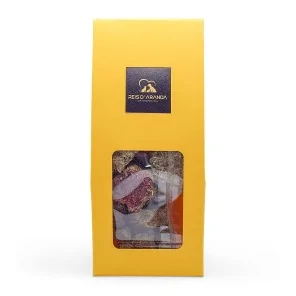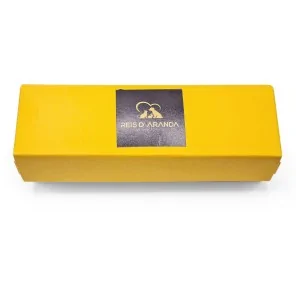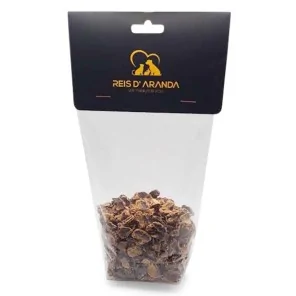Its name says it all: the Vienna blue rabbit comes from Austria. Not only is it beautiful with its shiny blue-grey...
HOW MUCH CAN A RABBIT BREED PER YEAR?
INTRODUCTION
How many times have we heard the saying ‘to give birth like a rabbit’? If this is true, rabbits should breed a lot of young and very often, shouldn't they? In reality, this is a half-truth and the way our doe breeds not only influences her health but also demonstrates the breeder's respect for the breeding mother.
DO FEMALE RABBITS GO INTO HEAT?
No. Female rabbits do not go into heat like dogs or menstruate like humans, but they are capable of breeding throughout the month, although the effectiveness of the breeding depends on how receptive she is to breeding (reflected in the colour and thickness of her vulva) and a combination of external factors: climate, temperature, quality of food, stress levels and even the doe's own decision.
We can tell if the doe is receptive by checking the vulva, if it is bright red (not purple) and appears shiny and thickened, accompanied by a gentle lifting of the hips, the doe is receptive to be mounted and the chances of gestation are approximately 50%. If she is purple this time has passed and we are looking at about a 25% chance and if she is pale and thin, it is still very early and the chances are minimal.
When a doe is very keen to breed she will mount the hand and may pull her hair out or even be aggressive with it if the male is very passive, or he is not keen to mount her for whatever reason (dwarf bred rabbits tend to be a bit passive, especially the floppy eared and long haired breeds).
TYPE OF OVULATION IN RABBITS
The doe is an animal of induced ovulation, that is to say that she does not lose time in the possibilities of becoming pregnant or not. Directly, when the male rabbit copulates, the doe triggers the whole hormonal chain which ends in ovulation and fertilisation. And it is until placentation, around 7 days after copulation, that we finally have a gestation with little risk of losing it along the way.
- MINUTE 0. The male performs copulation in a receptive doe, where the inputs of light, food, temperature and comfort bring positive value to the doe.
- MINUTE 10. Nerve stimulation arrives in the brain of the breeder, adding all the positive receptors mentioned above to the male effect.
- 1 HOUR. There is a release of GnRh from the hypothalamus to the pituitary which stimulates hormone secretion. Basically all brain activity.
- 10 HOURS. The adenohypophysis releases FSH-LH into the bloodstream with the aim of reaching the ovary and activating it.
- 12 HOURS. The eggs present in the ovaries begin the maturation and ovulation process that will allow them to detach from the ovary and be fertilised by the sperm.
- 15 HOURS. The eggs are released and fertilised.
- 7 DAYS. The future embryos are firmly implanted in the placenta and gestation begins.
When a mating is carried out, it is always recommended to carry out another mating between 6 and 8 hours after the first one, in this way we ensure that when the eggs are released they are found with the greatest possible quantity of spermatozoa.
INTENSIVE, INCORRECT BREEDING AND ITS CONSEQUENCES
When we talk about breeding, some people think of females breeding over and over again without a break, early weaning (which affects the health of the offspring) and animals dying of exhaustion. This is the case in industrial or intensive breeding, either for consumption (meat or fur) or for pets (multi-factory). In this type of breeding, the female breeds every month until she is ‘useless’ and is removed from breeding; as soon as she stops, she is inseminated again (it is not natural mating) and gestate a new litter while breeding the offspring she has just given birth to, which is weaned before the birth of the next litter.
This type of breeding seeks the highest profit in the shortest time, without taking into account the health of the mother at any time. Breeding in this way has a significant impact on the health of the doe, leading to decalcification, the likelihood of mastitis, stress (and associated illnesses), post-partum deaths, infant mortality (offspring weaned prematurely) and uterine prolapse (the uterus does not have time to recover).
Intensively reared rabbits have short lifespans (about 2 years).
No ethical breeding club accepts this type of breeding and has very strict rules regarding the welfare of the offspring and especially of the mother.
RESPECTFUL AND CORRECT BREEDING, THE BREED CLUBS' RULES.
Respectful or family breeding is very different in all respects and one of them is the number of times a breeding bitch breeds throughout her reproductive life, which generally lasts up to 4 years (5 in some cases previously studied by the club's Board of Directors).
In respectful breeding the minimum rest period between a birth and the next mating is two or three months and the minimum mating age is 6 months for females (there is no minimum age for males, but the first successful mating is usually around 5 months). It is rare for the same doe to give birth more than twice in a year and in some cases they have one litter per year or two litters per year throughout their reproductive life.
In the case of litters in which all the offspring have died before five days for whatever reason (they were not viable, the mother has not bred them, they have died in parturition...) the mother is left to rest for 15-30 days before trying to breed again, so that the pelvic muscles and the uterus can recover sufficiently (the female as such has not suffered any major wear and tear, as she has not bred her offspring).
These rabbits reach retirement in perfect health (from the age of 4 years), cases of mastitis are extremely rare and they can live long and happy lives as pets with a life expectancy of 10 to 14 years.
In the case of family breeding, the offspring are weaned at 45 to 60 days of age, depending on the case and breed, which ensures that the bunny is strong and has learned from the mother and siblings.
CONCLUSION
As we can see there is a big difference between industrial breeding and family breeding, doing the maths, an industrial breeding doe that has an average of 5 offspring per litter will give birth to 60 offspring per year (although the real number are those offspring that reach weaning without complications and do not die during those 4 weeks), which translates into about 120 bunnies throughout their reproductive period. In family breeding the average is 8-15 rabbits born in a period of 4 years, sometimes less because there are mothers who only have between 1 and 3 offspring per litter.
The health of the mother comes first and when dealing with other people's lives you have to be respectful. The breed clubs make this very clear and those members who do not respect this are severely sanctioned, and in the most serious cases expelled without mercy.
Leave a comment
Log in to post comments
















